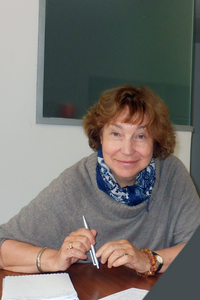The Everyday Life of Galicians in the 18th Century according to «Colloquium of Twenty-Four Rustic Galicians» by Martin Sarmiento
https://doi.org/10.46272/2409-3416-2025-13-3-64-82
Abstract
«The Colloquium of Twenty-Four Rustic Galicians», a text written by a Benedictine monk Martín Sarmiento in 1746, is an important source of information about the everyday life of Galicians in the first half of the 18th century that has a special place in Galician culture and beyond. It is the first text of the modern era written entirely in Galician. For the first time in history the author defends the value and independence of the Galician language in the Spanish-language glossary written for «The Colloquium». This approach is unique because during the so-called «Dark Ages» of Galician literature («Séculos escuros», from mid-15th to early 19th centuries), Galician was almost entirely replaced by Spanish in writing. Martín Sarmiento bases his work on his childhood memories, his travels across Galicia, documents from monastery archives and news he received from his Galician relatives. Sarmiento seeks to present reliable facts in the text, still he partly idealizes this area of Spain and its inhabitants. Sarmiento pays particularly close attention to portraying a low-class Galician of the time and describing their life, labour, leisure and traditional values. Martín Sarmiento’s writings were almost completely unknown to subsequent generations of Galician intellectuals.
This text has hardly been studied by Russian researchers, hence the author of this investigation aims to analyze its content using descriptive and cultural-historical methods, as well as to identify the particularities of how Galicians’ everyday life is represented in the text. This approach corresponds to the current cultural debate regarding the studies of how to describe the formation of the Spanish national character. In the eighteenth-century text we can find origins of the existing stereotypical image of Galicia, which continues to predominate in the «collective imaginary».
About the Author
M. S. SnetkovaRussian Federation
Marina S. Snetkova, PhD in Philology, Associate professor at the Department of Ibero-Romance Language Studies; Associate professor at the Department of Romance-Germanic Languages
119991, Moscow, Leninskie Gory street, 1, 51
119285, Moscow, Vorobiovskoe Shosse, 6A
References
1. Снеткова М.С. (2025) Лексико-стилистические средства создания образов Галисии и галисийцев в «Разговоре 24 галисийских крестьян» Мартина Сармьенто, Litera, № 2, с. 272‒291. DOI: 10.25136/2409-8698.2025.2.71529
2. Snetkova M.S. (2025) Leksiko-stilisticheskie sredstva sozdaniya obrazov Galisii i galisiitsev v «Razgovore 24 galisiiskikh krest'yan» Martina Sarm'ento [Lexico-Stylistic Means of Creating Images of Galicia and Galicians in «Colloquium of Twenty-Four Rustic Galicians» by Martin Sarmiento], Litera, no. 2, pp. 272‒291. DOI: 10.25136/2409-8698.2025.2.71529. (In Russian)
3. Beramendi J. (2016) Historia mínima de Galicia [Minimum History of Galicia], Madrid, Turner, 278 p.(In Spanish)
4. Cavada Nieto M., Núñez García O. (2008) El celtismo galaico en la Historiografía gallega de los ss. XIX y XX [The Galician Celtism in the Galician historiography of the 19th and 20th centuries], Minius, no. XVI, pp. 21–61. (In Spanish)
5. Fernández Rei F. (2002) Sarmiento e a lingua galega [Sarmiento and the Galician language], Boletín da Real Academia Galega, no. 363, pp. 211‒216. (In Galician)
6. Mariño Paz R. (1995) Estudio introductorio [Introductory Study] in Sarmiento M. Coloquio de vintecatro galegos rústicos [Colloquium of Twenty-Four Rustic Galicians], Pontevedra, Consello da Cultura galega, pp. 7‒102. (In Galician)
7. Monteagudo H. (2002) Tradición manuscrita e divulgación impresa do Coloquio en coplas galegas. Consideracións á luz do autógrafo orixinal [Manuscript Tradition and Printed Publication of the Colloquium in Galician Couplets. Considerations in the Light of the Original Autograph], Boletín da Real Academia Galega, no. 363, pp. 95‒122. (In Galician)
8. Murado M.-A. (2013) Outra idea de Galicia [Another idea of Galicia], Madrid, Debate, 208 p. (In Galician)
9. Pensado J. L. (1970) Estudio Preliminar [Preliminary Study] in Sarmiento M. Colección de voces y frases gallegas [Collection of Galician voices and phrases], Salamanca, Universidad de Salamanca, pp. 7‒70. (In Spanish)
10. Pereira Fernández X.M. (1997) Pontevedra en el Siglo XVI. Contribución a la historia urbana de Galicia [Pontevedra in the 16th century. Contribution to the urban history of Galicia], Obradoiro de Historia Moderna, no. 6, pp. 239–262. https://doi.org/10.15304/ohm.6.957 (In Spanish)
11. Temprano E. (1988) La selva de los tópicos [The Jungle of Topics], Madrid, Mondadori Omnibus, 242 p. (In Spanish)
12. Vilavedra D. (1999) Historia da literatura galega [History of Galician literature]. Vigo, Galaxia, 370 p. (In Galician)
13. Villares R. (2015) Historia de Galicia. Con un ensayo dedicado a la ciudad de Buenos Aires [History of Galicia. With an Essay Dedicated to the City of Buenos Aires], Buenos Aires, Mar Maior, 520 p. (In Spanish)
Review
For citations:
Snetkova M.S. The Everyday Life of Galicians in the 18th Century according to «Colloquium of Twenty-Four Rustic Galicians» by Martin Sarmiento. Cuadernos Iberoamericanos. 2025;13(3):64-82. (In Russ.) https://doi.org/10.46272/2409-3416-2025-13-3-64-82


























